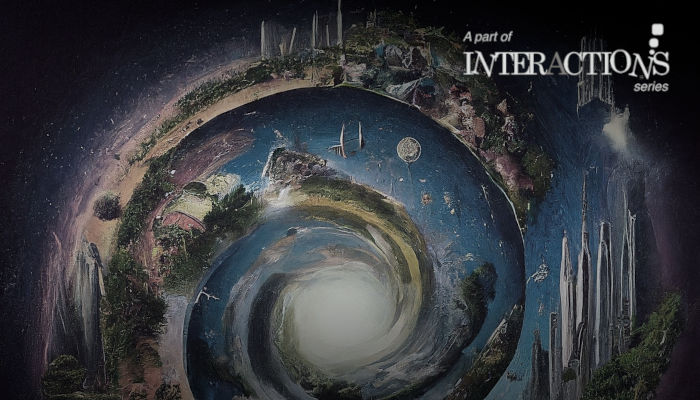
Techno-vision of the future from the margins
Could we imagine our future through arts and technology and what happens when we do it from the fringes rather than conventional centers of power, influence, and imagination?
Synopsis: This seminar will explore the alternative techno-futures envisioned by Southeast Asian artists. Moving beyond dominant, Western-centric narratives, LASALLE artist in residence Diego Maranan from the Philippines will be in conversation with Singapore-based artists, delving into artistic interventions that challenge prevailing techno-optimism and question the impact of technology on marginalised communities and the environment. Discussing techno-driven art installations, AI-generated arts or wearable technology design projects, the seminar will reimagine futures through indigenous cultural knowledge and epistemic traditions in Southeast Asia. Engaging with critical frameworks, it will question the ethics of technological development and its potential for fostering more equitable and sustainable futures for our planet.
Join the seminar to explore the transformative power of artistic imagination in shaping a more inclusive, sustainable, human-centred but technologically enabled vision of the future.
This event is free and open to the public.
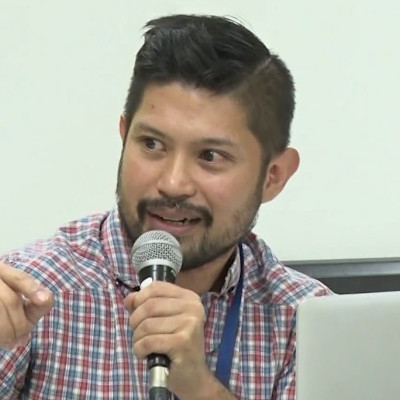
Diego Maranan
Speaker
Diego Maranan a transdisciplinary artist, designer, and researcher who investigates how technologies can help us reimagine and reconfigure our relationship with the environment, with other people, and with ourselves. His work ranges from co-creating socially engaged large-scale art installations, to designing wearable technologies for wellbeing and creativity, to building and managing creative research and educational programs that contribute to sustainable development goals. He is currently an Associate Professor and Dean of the Faculty of Information and Communications Studies at the University of the Philippines Open University and the Deputy Director for Research of the University of the Philippines Center for Intelligent Systems. He also co-founded Curiosity, a Manila-based design strategy firm that helps businesses, NGOs, and government design meaningful services, as well as SEADS, an international transdisciplinary network of artists, scientists, engineers and activists who reimagine and reshape the future through critical inquiry and hands-on experimentation.
Techno-vision of the future from the margins
Exploring past visions of the future reveals two key insights: First, we are not always great at predicting the future, but we are good (and unavoidably so) at shaping it. How the future unfolds is shaped by our present imaginings. Second, what the future looks like depends on where you’re looking at it from. Mainstream media, particularly Hollywood, often hands us meticulously crafted visions of the future. Rarely does the wider public get a chance to participate in crafting these images. In this talk, I share some of the creative projects—spanning dance, installation art, AI-generated imagery, and wearable technology design—that my colleagues and I have undertaken. These projects point towards anticipatory approaches to the future that ask, what happens when our images of the future emerge from the fringes rather than conventional centers of power, influence, and imagination?
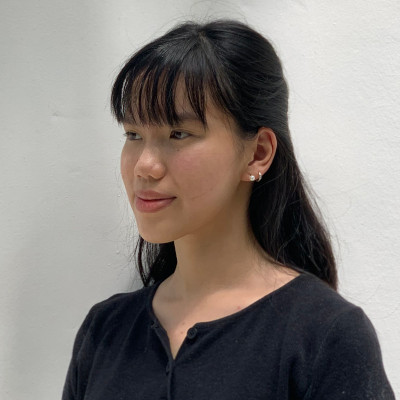
Chok Si Xuan
Panelist
Chok Si Xuan is an installation-based artist. Within her practice, she is primarily concerned with the investigation of material systems as embodiments of connections or relationships, often disrupting these inimical technologies with bodily acts that signify women’s work and the human hand. She currently resides and practices in Singapore, working on exhibitions, commissions and creative projects.
Artist Statement
In the realms of Techno-Orientalism and its relation to science fiction, the gesture of speculating appears in historical, political, social and cultural dimensions. If we understand speculation to be an indication of understanding realities that have yet to happen, rather than a world entirely dissimilar to ours, we might reflect further about what kinds of considerations were taken into imagining these worlds. Just as the narratives of science fiction mirror reality, new inventions, devices and platforms constantly being pushed out. An information and device driven world, we continue to view the world in machines, electrical notations and digital systems, these perceptions are consciously and unconsciously reproduced and affected by us. The importance of touch, touching as a level of closeness and kinship, to thinking about how we interact with objects, appliances, structures become a way to re-evaluate our dynamics with our built environment.
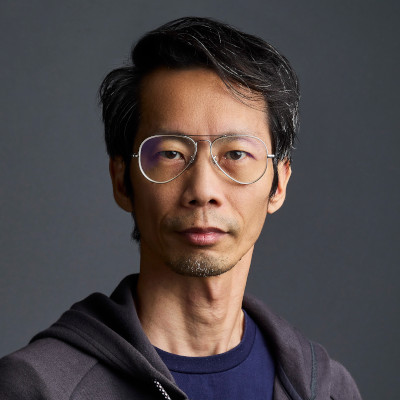
Urich Lau
Panelist
Urich Lau, born 1975, is a visual artist, independent curator and art educator based in Singapore. Focusing in video art, photography and media art, he has presented works in Singapore and internationally. His exhibitions include Singapore Biennale 2013, VII Tashkent International Biennale of Contemporary Art, the 7th Geumgang Nature Art Biennale and Pyeongchang Biennale 2017, and Ukrainian Biennale of Digital and Media Art 2021. His curatorial projects include SUPER–TRAJECTORY at Tainan Art Museum (Tainan, 2019) and ArtScience Museum (Singapore, 2020), and Sim Lim Square Art Residency and Deep Field Cinema (Singapore Art Week 2018 and 2021 respectively). Graduated with a Master of Fine Art from Royal Melbourne Institute of Technology in 2004, he is a lecturer at LASALLE College of the Arts. He is also a founding member of the art collective INTER–MISSION and the studio Hothouse.
Artist Statement
As an artistic practice and research, based in the speculative and imaginative nature of art and technology that could engage in conceptual discourses within the intent of contemporary art. Working in the forms of video, photography and media art, I attempt to examine subject matter in contextual irony through the audience’s perceptions and perspectives on socio-political and cultural interpretations with methodological interactions, interventions and interruptions.
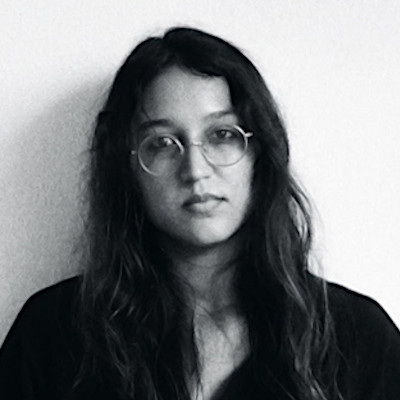
Victoria Hertel
Panelist
Victoria Hertel Velasco is a Singapore-based German-Venezuelan artist working in sensory installation and techno-organic prototyping. Her practice combines technology and organic matter to create multi-sensorial experiences that emphasise the interconnectedness of diverse networks (biological, digital, mechanical, sensorial, ritualistic). Through her work, she explores how these network interactions could expand our awareness of our systemic entanglement with everything ‘else’ to translate into more forms of care for our shared existence. Focusing on sustainable production, she collaborates with local engineers, maker-spaces, and suppliers as well as utilising found objects and renewable materials for her installations — seeing their interconnectedness as an extension of her art practice. Hertel Velasco received her BFA from the University of Barcelona and her MA in Fine Arts from LASALLE College of the Arts Singapore, in partnership with Goldsmiths, University of London. She was awarded the Chan-Davies Art Prize for her MA research on 'Trace as energy in materialities'.
Artist Statement
Aligning with the seminar's exploration of alternative techno-futures, my work explores deliberate deceleration in an era of rapid technological progress, focusing on the environmental and social impacts of our growing dependence on technology. It suggests a balanced approach, where technology serves to connect and enhance our relationship with the environment rather than deplete it. Through promoting techno-organic experiences, my aim is to encourage thoughtful engagement with our surroundings, fostering a future where technology supports sustainable coexistence and a deeper interconnectedness across human and non-human systems.
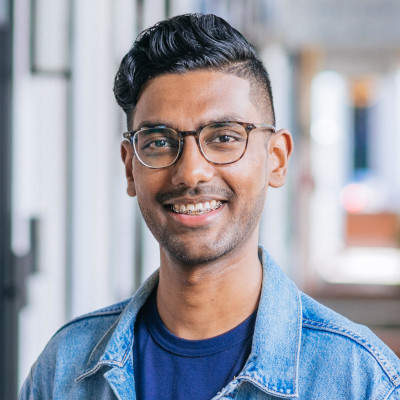
Kapilan Naidu
Panelist
Kapilan Naidu is a media artist, designer and technologist with a keen interest in exploring the effects of rapid mechanization and computational supremacy within contemporary society. Using interactivity and real-time data as mediums, his works span across generative images, animations and sound, mixed-reality experiences, screen-based installations, computer programs, and machine learning models. Kapilan is deeply inspired by the emergent nature of procedural algorithms, where they often guide the final outcome of his works. His investigation into the creative partnership between humans and machines also informs his current research around transhumanism, accelerationism, and intelligence in autonomous systems.
Artist Statement
As a media artist, my artistic exploration by definition requires me embrace technology. Techno-optimism (and accelerationism) as a result, are deeply integrated into the way I think and approach creativity. The transformative potential of technology has been something I have been lucky to witness multiple times throughout my life. While I recognize its dual nature, I remain firm in my belief in its capacity to advance creativity – the future of art lies within the silicon cores of the ever-advancing technologies around us.
With my practice, I aim to use technology in a way that comes across invisible. Technologic expressions in artistic pursuit should never be included for its sake, but rather to elevate whatever narrative, emotion and experience the work is aiming to evoke. Technology when used poorly can (and has) lead to unethical use cases – as seen with training generative AI. Yet technology also presents the hope for use to reframe current understanding surrounding artistic practices. Similar to how the invention of the camera freed artists to paint any way they desire – future technologies have the potential to free artists to truly focus on expression.